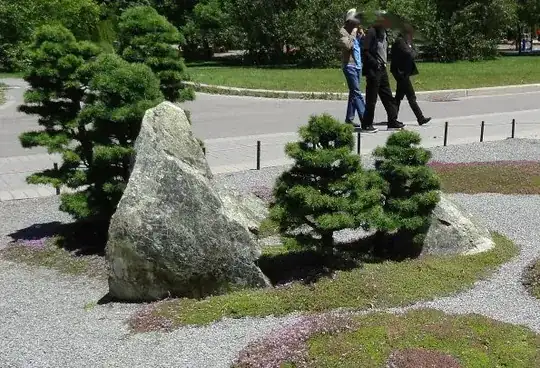Though a bit aside, ‘bonsai’ means a tree in a pot. Similarly treated trees in a landscape are ‘niwaki’. The esthetics of each differs, but the maintenance of pine trees in either setting relies on the same underlying pruning principle (see Thimann and Skoog via Google).
Needles are arrayed in groups called fascicles. There is a latent bud at the base of every fascicle. A number of these can be released by pruning the stem, removing only a portion of the foliage. These will then develop into new branches; the branch line is split into two or more, depending on how many fascicular buds developed into new stems. This ramification of the stem can quickly become very congested and unhealthy, so the common practice is to limit it to two new branches and, once those exist, remove the original stem end in the middle. This builds a structure of one stem leads to two (season 1), two becomes four (season2), four becomes eight and etc. Of course, there are occasions that only one new stem induced, maybe even none once in a while. The ramified structure of the foliage pad, though, provides a means to cope with this.
Any pine can be treated this way to maintain its size. Were no pruning done, the buds at the branch tip would extend each season quickly enlarging the tree. By pruning, the new growth is forced to emerge further back, toward the interior of the tree. It radically slows the rate of the tree getting bigger, but it inevitably will get larger.
This is typical of ‘white pines’. Other pines will also release buds on the bare stems at the interior of the tree as a result of the pruning. In bonsai this is referred to as ‘back budding’. As long as these ‘back buds’ get light, they can be developed into another ramified branch that can replace the existing when it desired to do so. Clearly, with these species, the tree can actually be made smaller!
